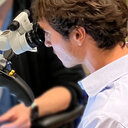
About
7
Publications
268
Reads
How we measure 'reads'
A 'read' is counted each time someone views a publication summary (such as the title, abstract, and list of authors), clicks on a figure, or views or downloads the full-text. Learn more
11
Citations
Introduction
Publications
Publications (7)
TRT increases the incidence of flexor tenosynovitis and DeQuervain's. There is an increase in rates of surgical release.
Objectives
The goal of this study is to establish radiographic features and characteristics of patient injury in cases of femoral shaft fractures that predict the presence of ipsilateral femoral neck fractures (IFNFs).
Methods
Patient data was retrospectively assessed from a single level I trauma center through the electronic health record using (...
Purpose
Anabolic steroid therapy has been associated with tendon injury, but there is a paucity of evidence associating physiologic testosterone replacement therapy (TRT) with tenosynovitis of the hand, specifically trigger finger and de Quervain tenosynovitis. The purpose of this study was to evaluate the relationship between TRT and tenosynovitis...
Background:
Our objective is to describe a minimally invasive endoscopic surgical technique for performing lateral lumbar interbody fusion (LLIF). LLIF is a common approach to lumbar fusion in cases of degenerative lumbar disease; however, complications associated with psoas and lumbar plexus injury sometimes arise. The endoscopic modification pre...
Vascularization remains one of the key challenges in creating functional tissue‐engineered constructs for therapeutic applications. This review aims to provide a developmental lens on the necessity of blood vessels in defining tissue function while exploring stem cells as a suitable source for vascular tissue engineering applications. The intersect...
The inherent self-organizing capacity of pluripotent and adult stem cell populations has advanced our fundamental understanding of processes that drive human development, homeostasis, regeneration, and disease progression. Translating these principles into in vitro model systems has been achieved with the advent of organoid technology, driving inno...


























